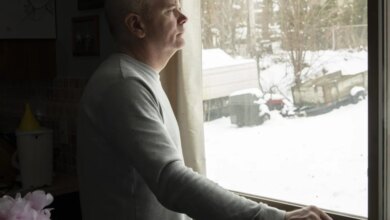Olivia Munn: Breast Cancer Risk Assessment Tool ‘saved my life’


Olivia Munn had a double mastectomy last year after being diagnosed with an “aggressive, fast-moving” form of breast cancer, she announced on Instagram Wednesday. She called herself “lucky” after a near-miss diagnosis.
Women who have mutations in their BRCA1 and/or BRCA2 genes are at increased risk of breast or ovarian cancers, according to the Centers for Disease Control and Prevention. Wanting to be proactive about her health, Munn in February 2023 took a genetic test that screens for 90 such cancer genes. She tested negative for all of them, as did her sister Sara, writing, “We called each other and high-fived over the phone.”
The 43-year-old actress also had a normal mammogram that winter—two months before she was diagnosed with breast cancer.
Munn credited her OB/GYN and “guardian angel,” Dr. Thaïs Aliabadi, with saving her life by recommending the Breast Cancer Risk Assessment Tool (BCRAT): “I wouldn’t have found my cancer for another year—at my next scheduled mammogram.” Also called The Gail Model, the BCRAT can help your doctor estimate both your short-term (within five years) and lifetime (up to age 90) risks of developing the disease.
“Dr. Aliabadi looked at factors like my age, familial breast cancer history, and the fact that I had my first child after the age of 30,” Munn said on Instagram. “She discovered my lifetime risk was at 37%. Because of that score I was sent to get an MRI, which led to an ultrasound, which then led to a biopsy.”
Breast cancers typically fall into one of four subtypes, based on whether the cancer cells have receptors for estrogen (ER-positive), progesterone (PR-positive), no hormones (HR-negative), or the HER2 gene. Here’s how the Mayo Clinic classifies them:
- Luminal A: ER-positive, PR-positive, HER2-negative
- Luminal B: ER-positive, PR-negative, HER2-positive
- HER2-positive: ER-negative, PR-negative, HER2-positive
- Basal-like or triple-negative: ER-negative, PR-negative, HER2-negative
Munn was diagnosed with luminal B, a subtype the Mayo Clinic notes is likely to benefit from chemotherapy and HER2 hormone therapy. Munn said she and her doctor caught the cancer early enough for her to have options. She got a double mastectomy 30 days after her biopsy, and has had a total of four surgeries in the last 10 months.
“I’ve kept the diagnosis and the worry and the recovery and the pain medicine and the paper gowns private,” Munn wrote. “I needed to catch my breath and get through some of the hardest parts before sharing.”
What is the Breast Cancer Risk Assessment Tool?
While the tool is accessible to anyone online through the National Cancer Institute (NCI), it is intended for health care professionals. The assessment includes factors such as:
- Your age at the time of your first menstrual period
- If you have children, your age at the time you gave birth to your firstborn
- How many of your first-degree relatives—mother, sisters, daughters—have had breast cancer
- Your race and ethnicity
“Ask your doctor to calculate your Breast Cancer Assessment Score,” Munn said. “Dr. Aliabadi says that if the number is greater than 20%, you need annual mammograms and breast MRIs starting at age 30.”
The BCRAT, however, has a number of limitations. For example, it isn’t intended for use in women who have a BRCA1 or BRCA2 mutation. Data on American Indian and Alaskan Native women are limited, meaning estimates for these populations may be inaccurate. The NCI also stresses the assessment may underestimate risk for Black women with previous biopsies, and Hispanic women born outside the U.S.
Consult your doctor about whether the BCRAT may adequately assess your risk of breast cancer.
For more on celebrity breast cancer diagnoses:




